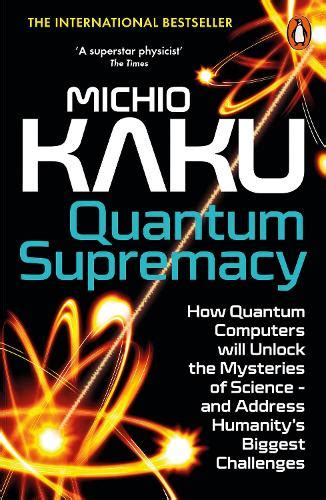Quantum computing is poised to revolutionize the world, driven by the enigmatic principles of quantum physics. To truly grasp the potential of this groundbreaking technology, it’s essential to delve into the core principles that form its foundation. This article explores the essentials of quantum physics, beginning with an overview of quantum mechanics, the bedrock of quantum theory. We’ll unravel key concepts such as superposition, entanglement, and quantum states, before examining the role of quantum measurement and the uncertainty principle. Finally, we’ll bridge the gap to quantum computing, highlighting the basics of qubits, gates, and circuits, and exploring their real-world applications.
hotelfiler.com will take you through an extensive exploration of this topic.
1. Overview of Quantum Mechanics: The Foundation of Quantum Physics
Quantum mechanics is the branch of physics that deals with the behavior of matter and energy at the smallest scales—those of atoms and subatomic particles. It challenges classical physics by introducing concepts that defy everyday intuition. At its core, quantum mechanics posits that particles can exist in multiple states simultaneously, a phenomenon known as superposition. This foundational theory also introduces the idea that particles are not just points but can also exhibit wave-like properties, leading to the concept of wave-particle duality.
One of the most revolutionary aspects of quantum mechanics is the idea that particles can become entangled, meaning the state of one particle is instantaneously connected to the state of another, regardless of distance. These concepts underpin much of the modern understanding of quantum physics and are integral to the development of quantum computing. By providing a framework to describe the behavior of particles on a quantum level, quantum mechanics has laid the groundwork for breakthroughs in technology, most notably in the field of quantum computing, where these principles are harnessed to process information in fundamentally new ways.

2. Key Concepts: Superposition, Entanglement, and Quantum States
Quantum mechanics introduces several key concepts that challenge our traditional understanding of physics, with superposition, entanglement, and quantum states being among the most fundamental.
Superposition refers to the ability of a quantum system to exist in multiple states simultaneously. Unlike classical bits in traditional computing, which can be either 0 or 1, quantum bits, or qubits, can be both 0 and 1 at the same time. This property allows quantum computers to process vast amounts of information in parallel, making them exponentially more powerful for certain tasks.
Entanglement is another mind-bending phenomenon where two or more particles become interconnected in such a way that the state of one particle directly influences the state of the other, no matter the distance between them. This connection persists even if the particles are separated by vast distances, leading to what Einstein famously called “spooky action at a distance.” Entanglement is crucial for quantum computing, enabling faster communication and more secure data encryption.
Quantum states are the possible conditions in which a quantum system can exist. They encompass all the information about a system’s properties, such as position, momentum, and spin. Understanding quantum states is essential for manipulating qubits and harnessing their power in quantum computing, where precise control of these states is key to performing calculations.

3. Quantum Measurement and the Uncertainty Principle
Quantum measurement is a complex and counterintuitive process that fundamentally alters the state of the system being observed. In classical physics, measurements can be made without significantly impacting the system, but in quantum mechanics, the act of measurement collapses a quantum state from a superposition into one of its possible definite states. This phenomenon underlies the probabilistic nature of quantum mechanics, where the outcome of a measurement is not deterministic but instead governed by probabilities.
Closely related to this is the Heisenberg Uncertainty Principle, a key concept in quantum physics that states it is impossible to simultaneously know both the exact position and momentum of a particle. The more precisely one property is measured, the less precisely the other can be known. This principle is not due to limitations in measurement technology but is a fundamental property of quantum systems. It highlights the inherent limitations of our knowledge at the quantum level, which has profound implications for the behavior of quantum systems and quantum computing.

4. Quantum Computing Basics: Qubits, Gates, and Quantum Circuits
Quantum computing represents a radical departure from classical computing by leveraging the principles of quantum mechanics. At the heart of this technology are qubits, the quantum equivalent of classical bits. Unlike classical bits, which can be either 0 or 1, qubits can exist in a superposition of both states simultaneously, allowing quantum computers to process information in ways that classical computers cannot.
To perform computations, quantum computers use quantum gates, which manipulate qubits in a similar way that classical logic gates manipulate bits. However, quantum gates operate on the probability amplitudes of qubits, enabling the execution of complex operations like entanglement and superposition. Common quantum gates include the Hadamard gate, which creates superposition, and the CNOT gate, which entangles qubits. These gates are combined into quantum circuits, the basic building blocks of quantum algorithms.
Quantum circuits are designed to solve specific problems by taking advantage of the unique properties of quantum mechanics. For example, they can perform parallel computations and solve certain problems exponentially faster than classical circuits. As quantum computing technology continues to advance, these circuits are expected to unlock new possibilities in fields such as cryptography, material science, and artificial intelligence, where traditional computing methods fall short. Understanding qubits, gates, and circuits is crucial for grasping the transformative potential of quantum computing.
5. Real-World Applications and Implications of Quantum Physics in Computing
The real-world applications of quantum physics in computing are vast and hold the potential to revolutionize numerous industries. One of the most promising areas is cryptography, where quantum computing could enable the creation of virtually unbreakable encryption methods. Quantum key distribution, for example, uses the principles of quantum entanglement to secure communication channels, making it impossible for eavesdroppers to intercept data without detection.
Another significant application is in material science and chemistry, where quantum computers can simulate complex molecular interactions that are beyond the reach of classical computers. This capability could lead to the discovery of new materials, drugs, and chemical processes, accelerating advancements in medicine, energy, and technology.
Quantum computing also offers tremendous potential in optimizing complex systems, such as supply chains, financial markets, and artificial intelligence. By processing multiple possibilities simultaneously, quantum computers can find optimal solutions more efficiently than classical systems, leading to improved decision-making and resource management.
Despite these promising applications, the implications of quantum computing also raise challenges, particularly in cybersecurity, as current encryption methods could become obsolete. As research and development in quantum computing continue to progress, the world will need to adapt to both the opportunities and challenges this powerful technology presents.
Quantum computing, grounded in the principles of quantum physics, holds the potential to transform technology and society. By understanding its foundational concepts, we can better appreciate the profound impact quantum computing will have on fields like cryptography, material science, and optimization, ushering in a new era of technological innovation.
hotelfiler.com
